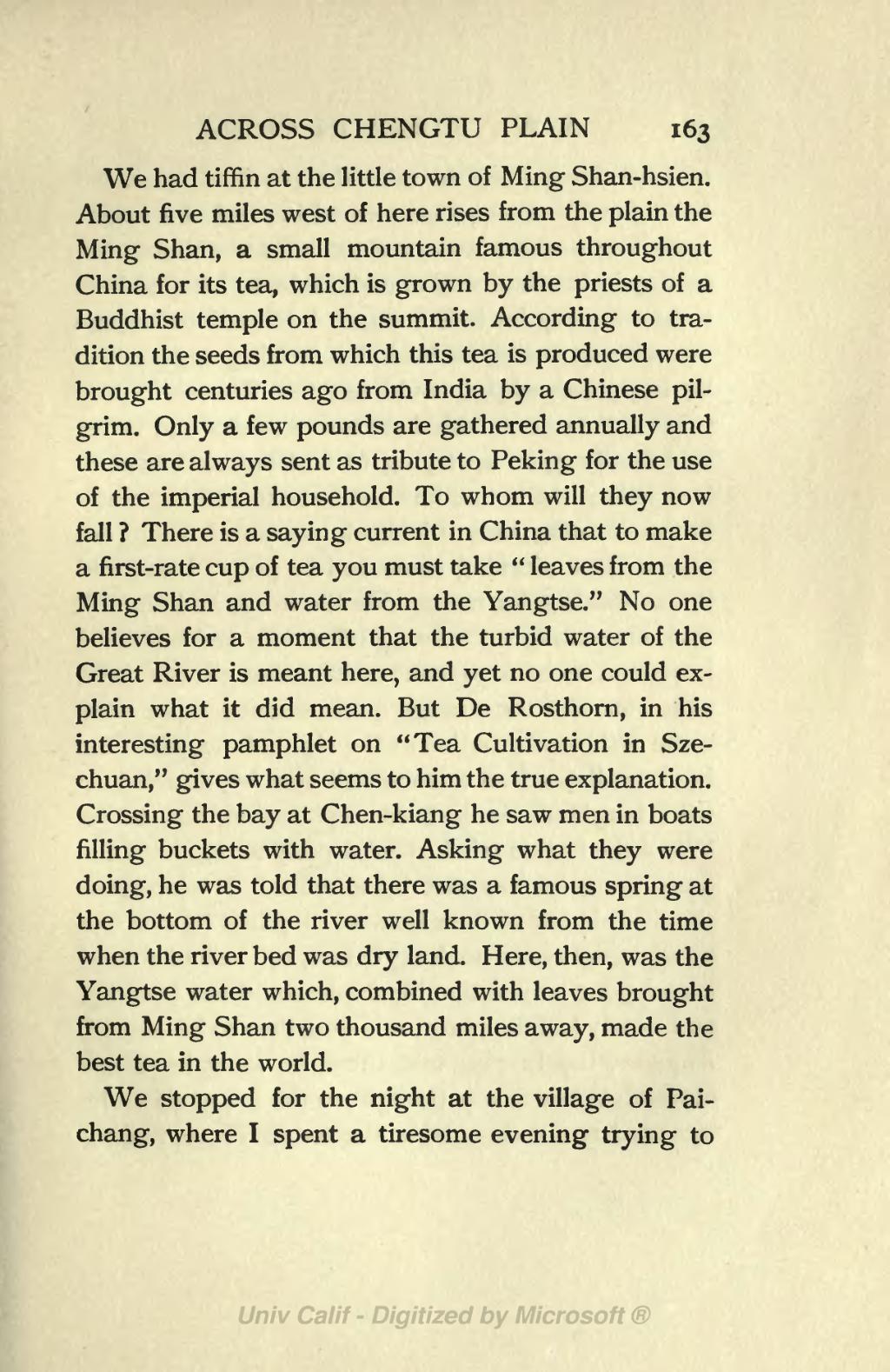We had tiffin at the little town of Ming Shan-hsien. About five miles west of here rises from the plain the Ming Shan, a small mountain famous throughout China for its tea, which is grown by the priests of a Buddhist temple on the summit. According to tradition the seeds from which this tea is produced were brought centuries ago from India by a Chinese pilgrim. Only a few pounds are gathered annually and these are always sent as tribute to Peking for the use of the imperial household. To whom will they now fall? There is a saying current in China that to make a first-rate cup of tea you must take "leaves from the Ming Shan and water from the Yangtse." No one believes for a moment that the turbid water of the Great River is meant here, and yet no one could explain what it did mean. But De Rosthorn, in his interesting pamphlet on "Tea Cultivation in Szechuan," gives what seems to him the true explanation. Crossing the bay at Chen-kiang he saw men in boats filling buckets with water. Asking what they were doing, he was told that there was a famous spring at the bottom of the river well known from the time when the river bed was dry land. Here, then, was the Yangtse water which, combined with leaves brought from Ming Shan two thousand miles away, made the best tea in the world.
We stopped for the night at the village of Paichang, where I spent a tiresome evening trying to
